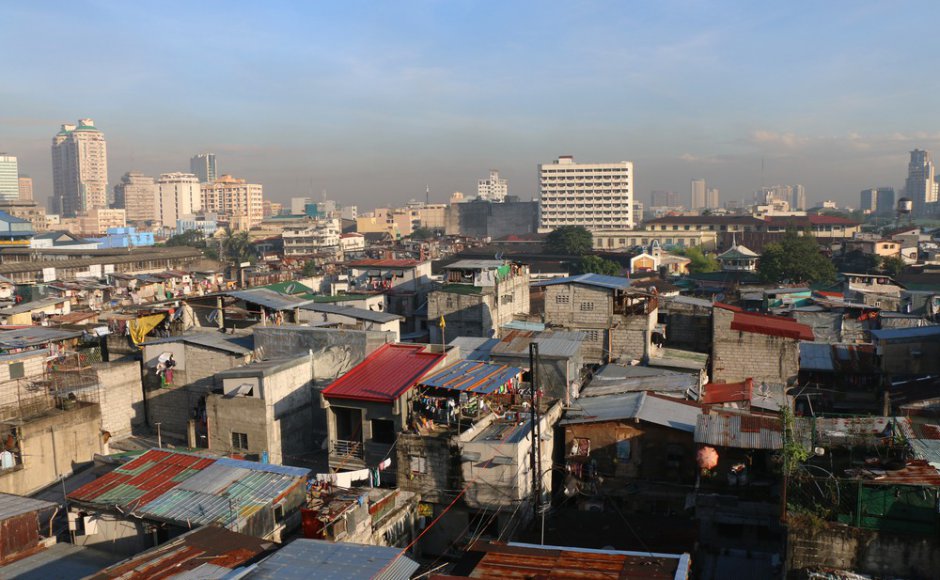A. Azim Idris (Asian Correspondent)

BY the end of his term in 2022, President Rodrigo Duterte wants to transform the Philippines into an upper-middle income country, a new reality the Southeast Asian strongman hopes will extend decades beyond his premiership.
Central to the president’s ambitions are plans to accelerate urban and rural poverty reduction, and implement his administration’s mandated “golden age of infrastructure”, also referred to as “Dutertenomics”.
As he entered his first year in office, the president rolled out several poverty-eradication initiatives, including the Philippine Development Plan (PDP) 2017-2022, a blueprint for the country’s development.
Launched by the National Economic and Development Authority (NEDA) earlier this month, the plan aims to reduce poverty incidences in the urban population from 21.6 percent in 2015 to 14 percent by 2022. In same period, poverty incidence in rural regions are expected to decrease from 30 percent to 20 percent.
NEDA’s Socioeconomic Planning secretary Ernesto M. Pernia said the six-year plan largely stems from Duterte’s 10-point Socioeconomic Agenda and is the first of four medium-term plans that will work towards realising AmBisyon Natin 2040, the country’s vision over the next 25 years.
“We already have the goal. Now here’s the plan to turn AmBisyon Natin 2040 into reality,” he said earlier this month.
Embedded in the PDP, Pernia said, are bedrock strategies that provide the necessary environment for the plan to work; achieving peace and security, accelerating infrastructure development, building resilient communities, and ensuring ecological integrity.
Other targets include a higher trust in government and society, more resilient individuals and communities, and a greater drive for innovation.
He said the PDP has 21 chapters aimed at laying a strong foundation for inclusive growth and a globally competitive economy—all of which will enable Filipinos to achieve their aspirations.
On June 1, Duterte signed an executive order directing “all departments, offices and instrumentalities of the national government, including government-owned and –controlled corporations, and the local government units, whether or not they receive funding support through General Appropriations Act” to adopt and disseminate the PDP 2017-2022, and undertake efforts leading to its full implementation.
Tripling income per capita in 25 years
NEDA Assistant Director-General Rosemarie Edillon said in a nutshell, the development plan is about laying the foundation to build on current successes and transform the Philippine economy.
“We have been a lower-middle income economy for past 20 or 30 years so we want to graduate (to upper-middle income) by end of Duterte’s term,” she said, adding that “subsistence incidence”, or the proportion of the population with per capita income less than the per capita food threshold, will be at only 5 percent by 2020.
“If we succeed in doing this, then by the next plan period, subsistence incidences will be ‘0’.”
Edillion said this recently in NEDA’s headquarters in Manila, one of five scheduled city stops made by a delegation of journalists participating in the East-West Center’s Jefferson Fellowship 2017 programme. The three-week course to study Trump-era trade, security and strategic relationships in the Asia Pacific also took the journalists to Honolulu, Tokyo, Beijing, Shenzen, and Manila.
Edillon said the development plan would also work towards improving home ownership among Filipinos as at present, only 67 percent of the earning population own homes. In more developed Southeast Asian economies such as Singapore, ownership of residential property stands at an astounding 90 percent.
“Filipinos also want access to transportation, as well as travel and vacation opportunities.
“They want their futures to be secure, and to have access to resources while having assistance in unexpected expenses such as contingencies,” she said, noting that the Philippines is a disaster-prone country that faces up to 20 major cyclones a year.
She also pointed to recent data that revealed only 40 percent of Filipinos have savings accounts. The government is working towards raising the figure.
On the long-term goals of AmBisyon Natin 2040, Edillon said the government wants to triple the annual capita income from US$3,550 to US$11,000 in the next 25 years.
“It sounds ambitious but Malaysia did it in 33 years while South Korea did it in only 20.”
Economic situation
According to the Manila-based Asian Development Bank (ADB), the Philippine economy has performed well the past 15 years, despite fluctuations in its GDP growth.
ADB Country Economist Aekapol Chongvilaivan said growth has been particularly robust in recent years; last year, the Philippine economy expanded 6.8 percent and is forecast to grow at a similar rate until next year.
“The macroeconomic condition is robust, inflation quite modest at the low level government with debt at 40 percent and declining for the past 10 years,” he told the Jefferson Fellowship delegation last month the ADB headquarters.
“This means that the government is in a good position to ramp up public spending. And Philippines traditionally has a problem of underspending, and this is quite different from other middle income countries in the region.”
He said the positive growth represents an “exceptional opportunity” for the government and the private sector.
“With right conditions I think there is a huge potential for this country to sustain the growth and fiscal balance is slightly on the deficit traditionally, at the low at 2 percent.”
Traditionally the key driver of growth in the Philippines is household spending, which takes up the biggest proportion of GDP growth, followed by investment.
This year, the ADB sees domestic consumption and investment as key drivers of growth.
Challenges for equitable growth
Equitable growth poses a challenge, however, according to Chongvilaivan, as the Philippines’ rapidly expanding economy is largely driven by growth in Manila.
Other poorer regions, such as the Visayas and Mindanao, only contribute to a quarter of the country’s total growth despite them being among the biggest populated regions, most of which are poor, agricultural areas.
Even though the country has seen poverty reduction from 27 percent in 2006 to about 22 or 23 percent in 2015, Aekapol said by poverty incidence rates in the other regions are tremendous – 40 percent in Mindanao and more than 30 percent in Visayas.
“Therefore it is a big challenge for the government on how to make sure that the growth is actually enjoyed equally in the region – not by people in the city but by those outside as well,” he said.
The other challenge is tackling high youth unemployment, which is relatively high in the Philippines compared to other Southeast Asian countries. Aekapol noted that it has become more difficult for graduates to transition into the job market and that the rate of underemployment remained high.
There is currently five percent of unemployment among the population and underemployment 20 percent, mostly from the agricultural sector that functions seasonally.
At the “Dutertenomics” forum in Manila in April, Pernia said the administration was looking into rolling out more than PHP3.6 trillion (US$6.8 billion) in public infrastructure projects from 2018 to 2020.
The Philippines Inquirer also quoted Secretary Benjamin E. Diokno as saying that a total of PHP8.4 trillion (US$16.8 billion) would be spent for infrastructure during the six-year Duterte administration. Diokno said this was to ensure the share of infrastructure spending in the GDP would rise from 5.4 percent this year to 7.4 percent in 2022.
Aekapol said the government was right to accelerate infrastructure investment as much of the country was undeveloped on this front.
Although the Philippines ranked 57th in the World Economic Forum’s Global Competitiveness Index 2016-2017, the country was ranked 95th for infrastructure, the lowest among middle income countries in Southeast Asia.
The government needs to catch up on infra-development to be at par with other countries,” he said.
“There is a need to improve the connectivity of the region to ensure that the value chain and the transport infrastructure is there so that growth can be redistributed to the poorer regions and therefore address the challenges.”
